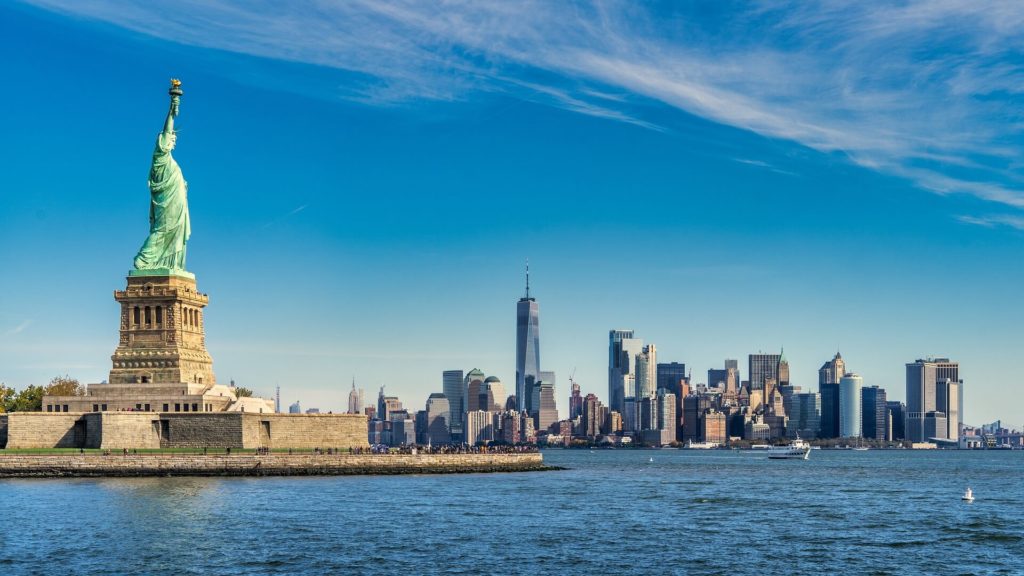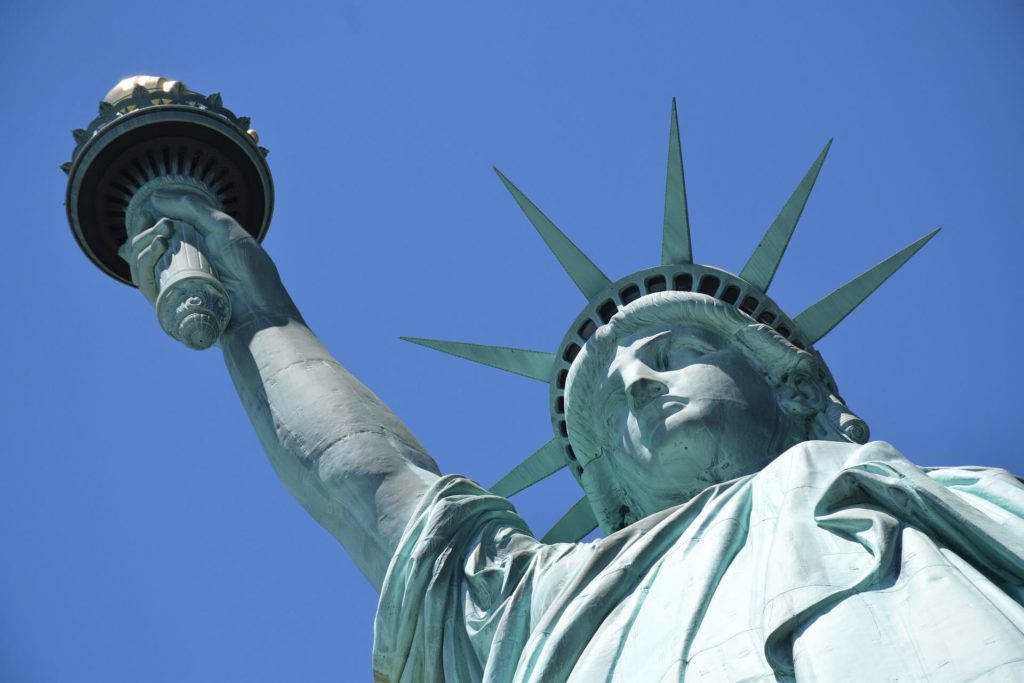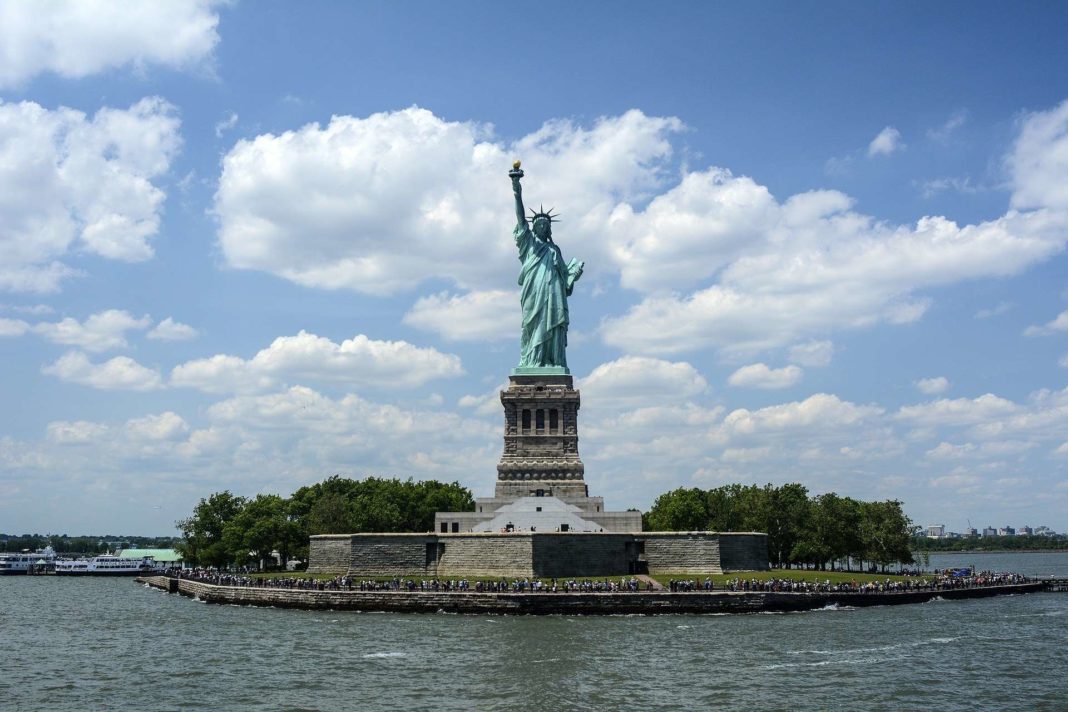The Statue of Liberty, officially known as “Liberty Enlightening the World”, is a colossal neoclassical sculpture standing tall on Liberty Island in New York City’s harbor. The monument, a testament to the long-standing friendship between France and the United States, is renowned globally as a symbol of freedom, democracy, and hope.
Conception of the Monument

In the aftermath of the American Civil War, the idea of the monument was proposed in 1865 by the French historian Édouard de Laboulaye, an ardent supporter of America. He envisioned a monument commemorating the centennial of the U.S. Declaration of Independence and celebrating the abolition of slavery. He suggested that France should finance the statue, and the United States should provide the site and the pedestal.
Design and Symbolism

The responsibility of designing the monument fell on the shoulders of the French sculptor, Frédéric Auguste Bartholdi. He envisioned the statue as a robed female figure representing Libertas, the Roman goddess of liberty. She holds a torch in her right hand, symbolizing enlightenment, and a tabula ansata inscribed with the date of the U.S. Declaration of Independence in her left hand, embodying the law. The broken chain at her feet signifies freedom and the end of slavery. The seven spikes of her crown represent the seven continents and seas, underlining the universal concept of liberty.
Construction and Assembly
The construction of the statue began in France in 1875. Bartholdi crafted the statue’s “skin” from sheets of hammered copper, while the inner framework was designed by Alexandre-Gustave Eiffel, the man behind the famed Eiffel Tower. The Statue of Liberty, made of copper, has developed a greenish-blue patina over time due to natural oxidation. This color is now synonymous with the statue and is one of its most recognizable features. The statue, towering at a height of 151 feet, was completed in France in 1884. It was then disassembled, packed into more than 200 crates, and shipped to New York City.
Upon its arrival, construction of the pedestal, designed by American architect Richard Morris Hunt, got underway on what was then known as Bedloe’s Island. By October 1886, the statue was reassembled and mounted on its pedestal, reaching a height of 305 feet (93 meters), including the pedestal.
Dedication and Early Years
On October 28, 1886, the Statue of Liberty was officially dedicated by President Grover Cleveland in a grand ceremony attended by thousands of spectators. Initially, the U.S. Lighthouse Board operated the Statue of Liberty, as the statue’s torch represented a navigational aid for sailors. In 1901, the War Department took over its administration due to Fort Wood’s status as an operational army post.
Becoming a National Monument
The federal government declared the statue a national monument in 1924. In 1933, the administration of the statue was transferred to the National Park Service. The monument’s jurisdiction expanded in 1956 when Bedloe’s Island was renamed Liberty Island. In 1965, the nearby Ellis Island, the country’s major immigration station, was added to the jurisdiction, bringing its total area to about 58 acres.
Restoration and Modern Day
Over the years, the Statue of Liberty underwent several modifications and restorations. In 1984, it was added to UNESCO’s World Heritage List. The statue was closed to the public for extensive restoration in preparation for its centennial celebration in 1986. Following the terrorist attacks of September 11, 2001, Liberty Island was closed for 100 days. The statue itself was not reopened to visitor access until August 2004.
Visiting the Statue of Liberty
Today, the Statue of Liberty is a major tourist attraction, with millions of visitors each year. Tourists can visit the pedestal and the interior of the statue’s crown, and enjoy the breathtaking view from the observation deck. The base of the statue’s pedestal houses exhibits on the monument’s history, including the original 1886 torch. Limited numbers of visitors can access the pedestal and the interior of the statue’s crown.
The Statue of Liberty Museum
Another highlight of a visit to Liberty Island is the Statue of Liberty Museum. Opened in 2019, the museum offers visitors a deeper understanding of the statue’s history, influence, and legacy. The museum houses a range of exhibits, including the statue’s original torch, replaced in 1984.
The Role of the Foundation
The Statue of Liberty-Ellis Island Foundation has been instrumental in preserving the monument and expanding educational resources about it. The Foundation is committed to fulfilling projects that will keep Lady Liberty standing tall for current and future generations.
The greenish-blue patina on the Statue of Liberty is caused by the natural weathering and oxidation of the copper material from which the statue is made. Over time, exposure to the elements, particularly moisture and the air, has led to the formation of this distinctive patina, which now protects the underlying copper from further corrosion.
| Statistic | Information |
| Height | 305 feet (from ground to tip of torch) |
| Weight | 450,000 pounds (204 metric tons) |
| Location | Liberty Island, New York Harbor, United States |
| Construction Period | 1875 – 1884 |
| Architect | Frédéric Auguste Bartholdi |
| Engineer | Alexandre Gustave Eiffel |
| Dedicated | October 28, 1886 |
| Material | Copper |
| Symbolism | Represents freedom and democracy; a gift from France to the United States |













